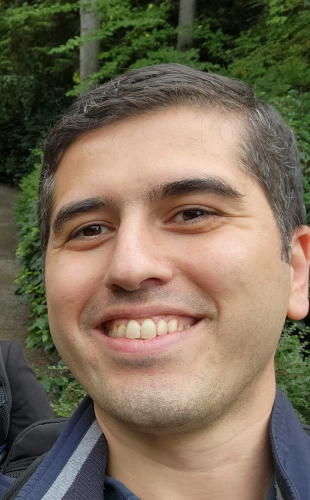
Co-presented by Studio X, Goergen Institute for Data Science, and the Institute of Optics
Holographic displays have long been debated as the display technology that could bring true three-dimensionality, accurate color production, and retinal resolutions to our screens, including augmented reality glasses and virtual reality headsets. However, these promises of holographic displays have yet to be proven and delivered. In this talk, Dr. Akşit will introduce his group’s research work to deliver these promises and describe how they aim to provide life-like images by bridging the gap between Human-Visual Perception (HVS) and Computer-Generated Holography (CGH).
The research he will describe in this context spans from their open-source toolkit and new rendering algorithms to novel types of display hardware.
Kaan Akşit is an Associate Professor in the Computer Science department at University College London, where he leads the Computational Light Laboratory. Kaan received his Ph.D. in electrical engineering at Koç University, Türkiye* in 2014. His M.Sc. degree is in electrical power engineering from RWTH Aachen University, Germany, obtained in 2010. Kaan received his B.S. degree in electrical engineering from Istanbul Technical University, Türkiye, in 2007. Kaan researches the intersection of light and computation, including computational approaches in imaging, graphics, fabrication, and displays. Kaan’s research works are widely known among the optics and graphics community for his contributions to display technologies dedicated to virtual reality, augmented reality, and three-dimensional displays with and without glasses. He worked as a research intern in Philips Research, the Netherlands, and Disney Research, Switzerland, in 2009 and 2013, respectively. In addition, he was a research scientist at NVIDIA, the USA, between 2014 and 2020. He is the recipient of Emerging Technologies best in show awards in SIGGRAPH 2018 and SIGGRAPH 2019, DCEXPO special prize in SIGGRAPH 2017, the best papers in IEEE VR 2017 and ISMAR 2018, and the best paper nominee in IEEE VR 2019 and IEEE VR 2021.
Relevant Links
Course on Computer-Generated Holography and Human-Visual Perception
Our differentiable toolkit, Odak
Realistic Defocus Blur for Multiplane Computer-Generated Holography
HoloBeam: Paper-Thin Near-Eye Displays
Recording
The Voices of XR speaker series is made possible by Kathy McMorran Murray and the National Science Foundation (NSF) Research Traineeship (NRT) program as part of the Interdisciplinary Graduate Training in the Science, Technology, and Applications of Augmented and Virtual Reality at the University of Rochester (#1922591).

